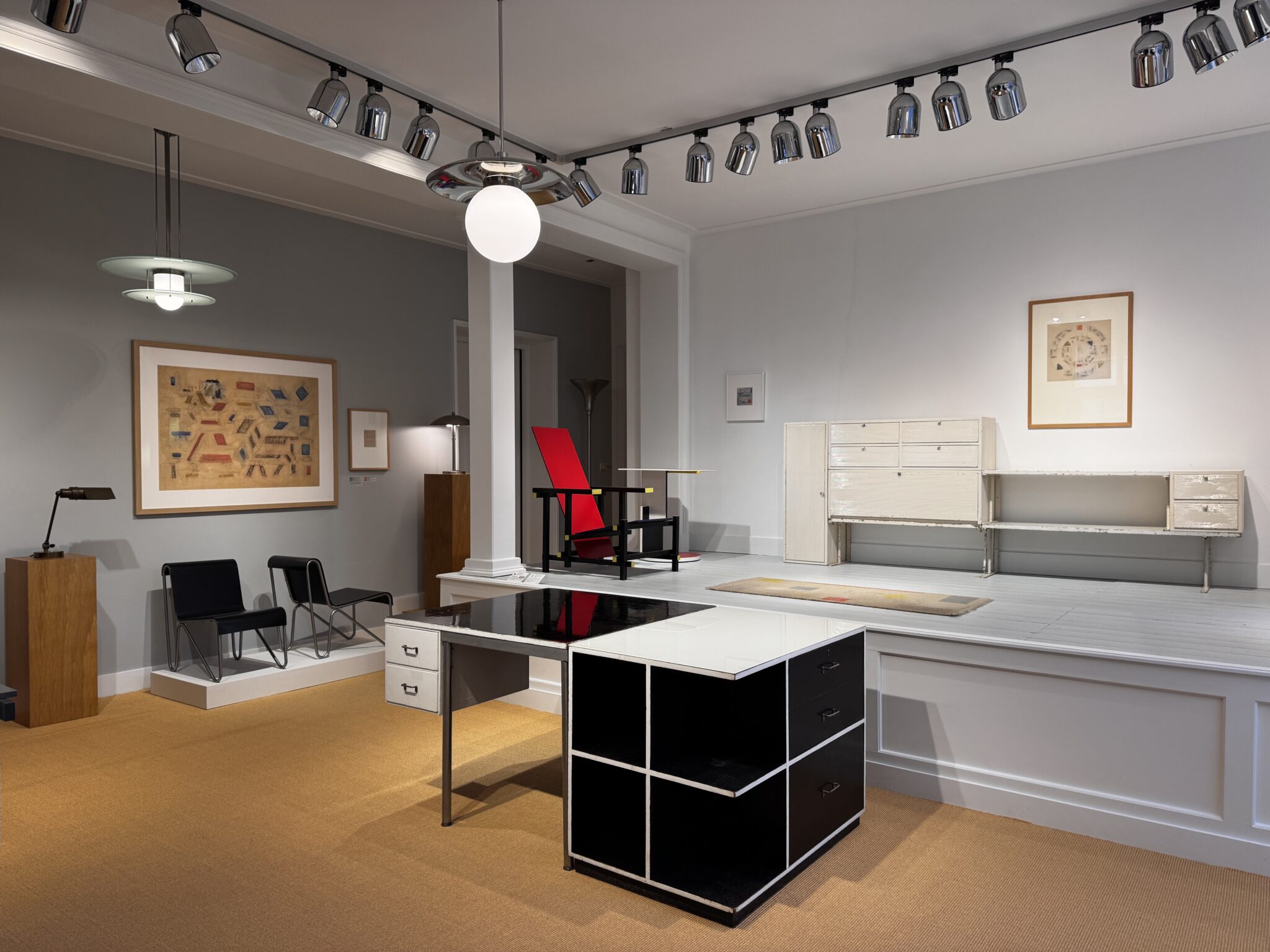Gerrit Th. Rietveld (1888-1964)
‘Modular furniture or plank furniture’, 1930
Execution: Metz&Co Amsterdam-The Hague, 1930-1935
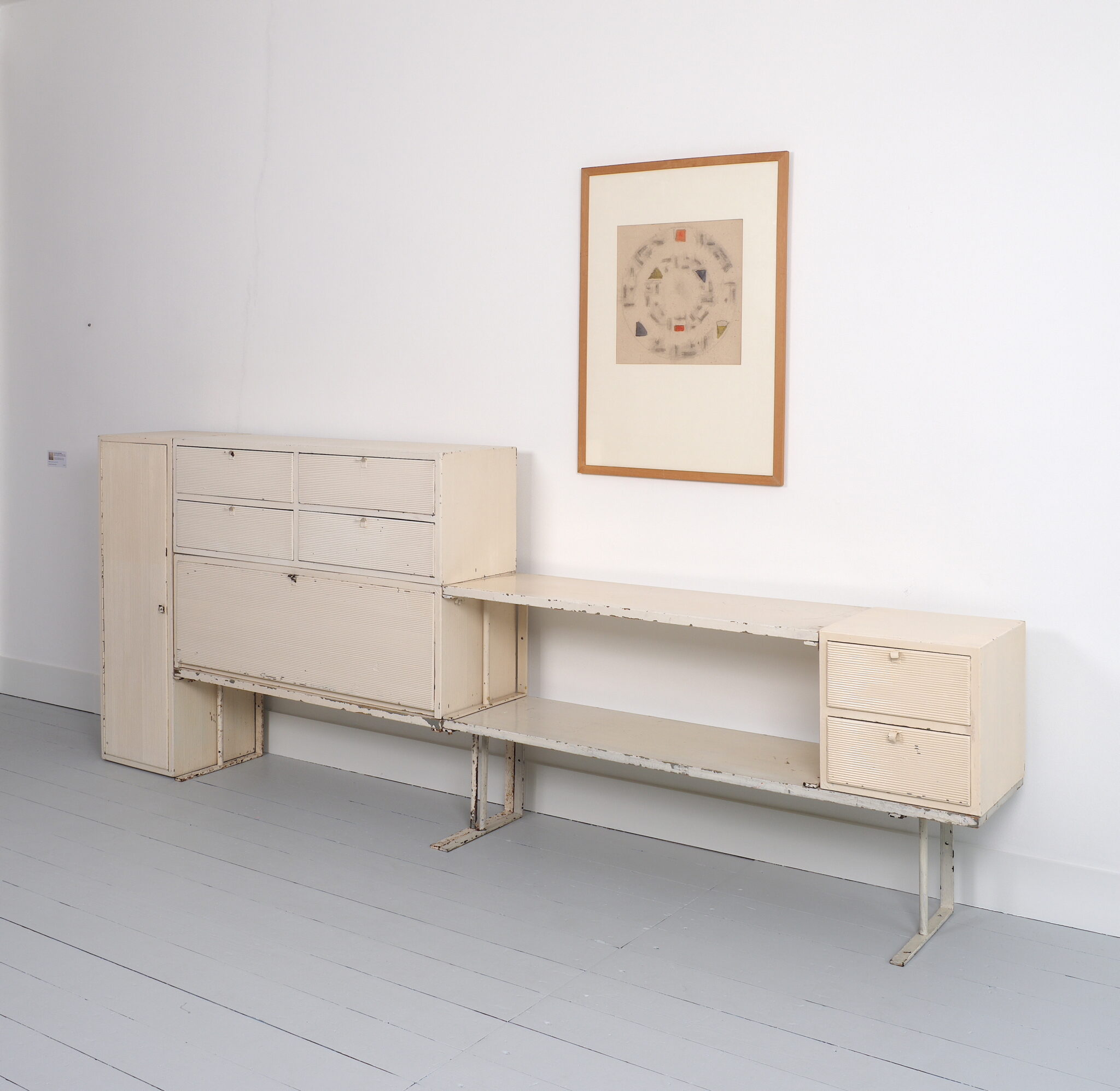
Painted wood, plywood, brass and metal.
Components:
2 shelves/stands 30 x 30 x 90 cm.
1 shelf/stand 30 x 30 x 120 cm.
1 standing cabinet with hinged door and two shelves, 30 x 30 x 90 cm
1 horizontal cabinet with hinged door, 30 x 30 x 90 cm.
1 horizontal drawer unit with 4 drawers, 30 x 30 x 90 cm.
1 square drawer unit with two drawers, 30 x 30 x 30 cm.
Provenance:
Mrs. Ada Helena Hondius Crone, Bloemendaal-Amsterdam ca. 1935-1984; Mr. Gillis Hondius Amsterdam, The Hague, London ca. 1984-2023
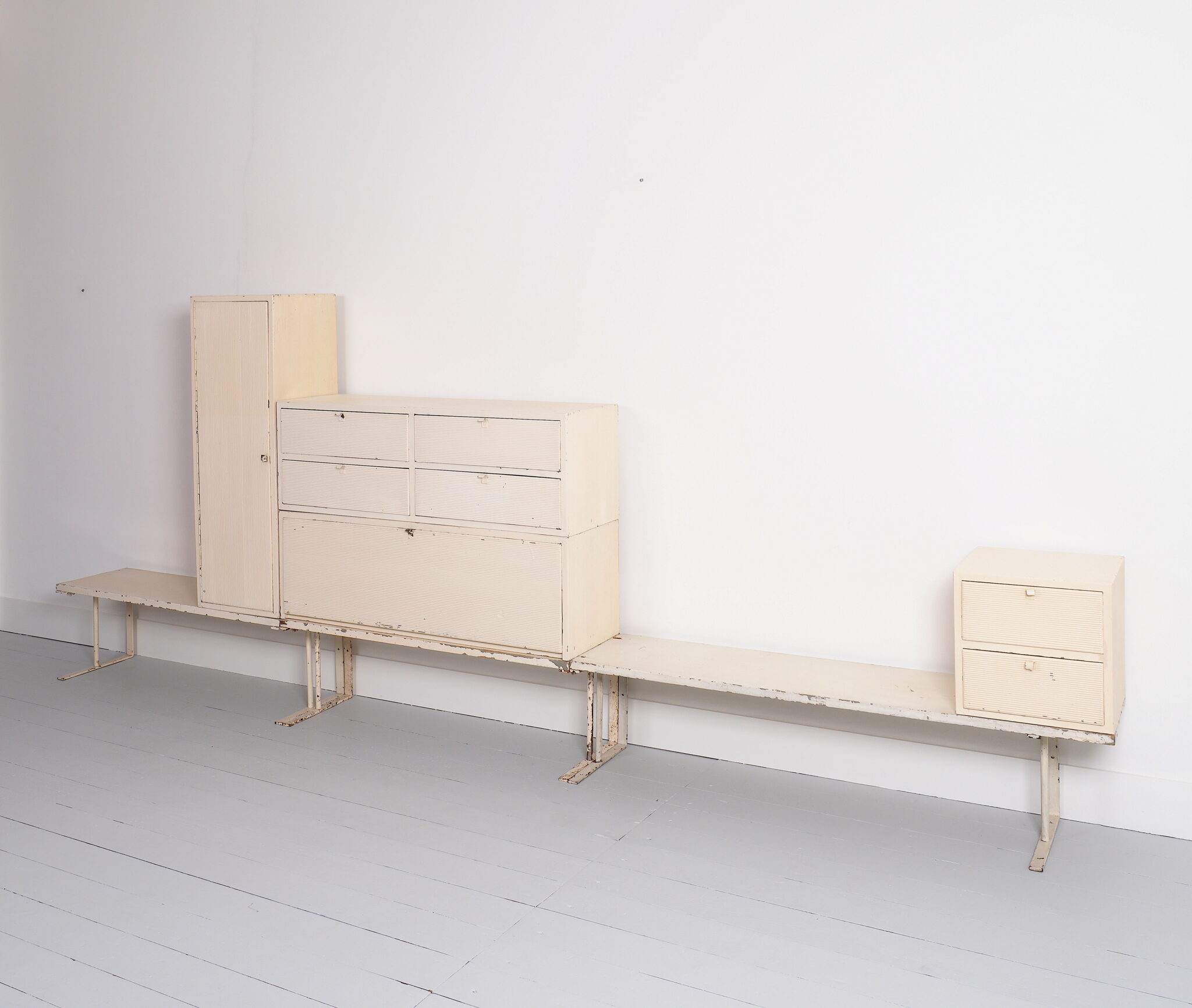
Design
The design of the ‘Seriemeubelen’ (Modular furniture) shows that Rietveld continued to renew himself after his contribution to the aesthetic movement “De Stijl” and that he also played a significant role in the subsequent modern movements. The ‘Seriemeubelen’ mark the transition in his work, in the early thirties, towards “functionalism”.
With the ‘Seriemeubelen’, Rietveld succeeded for the first time in coming close to his pursuit of standardization and series production in furniture design in the early thirties. It is a furniture system designed on a grid of 30 x 30 cm with modules (called ‘units’ by Metz) with which the customer was able to personalize his or her furniture in varying compositions.
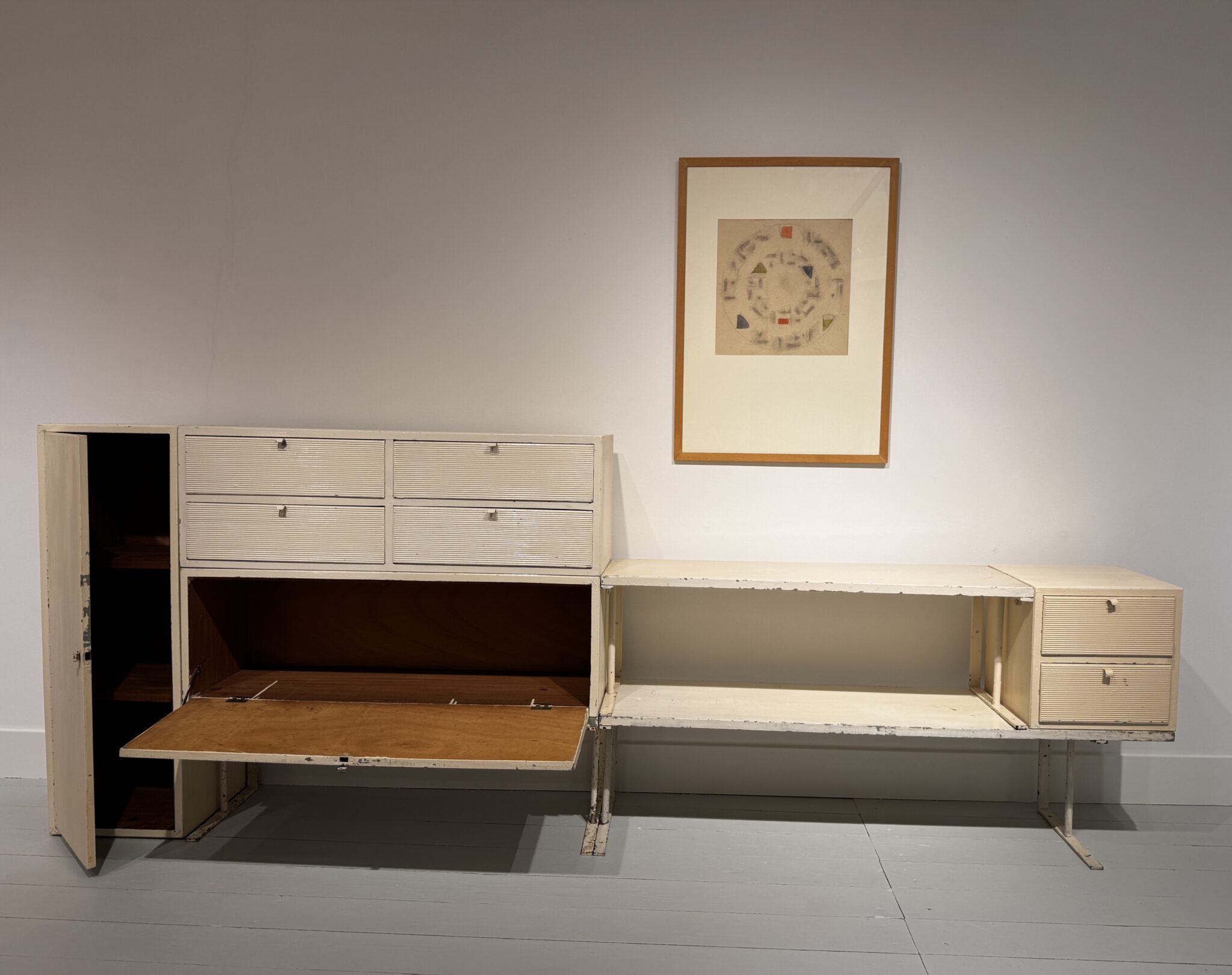
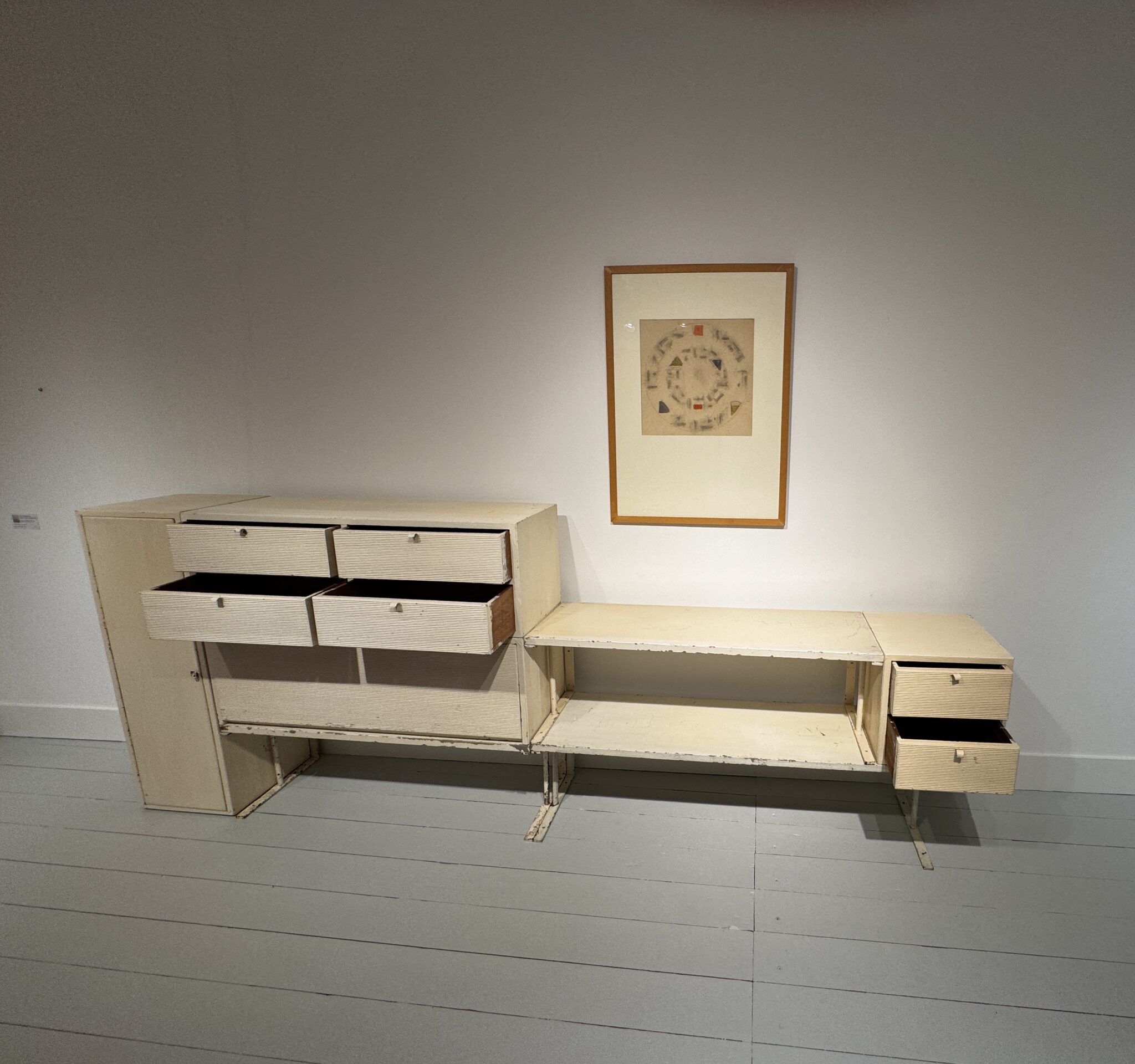
Exhibitions
Photo reports and publications in magazines show that the ‘Seriemeubelen’ played a prominent role at three important interior exhibitions for Dutch modern furniture in the early thirties;
– The model home in 1931 on the Erasmuslaan in Utrecht (opposite to the Rietveld/Schröder house)
– The exhibition ‘Het stalen meubel’ in 1932 at Metz&Co
– The opening exhibition ‘Op het dak’ in the dome of Metz&Co in 1933.
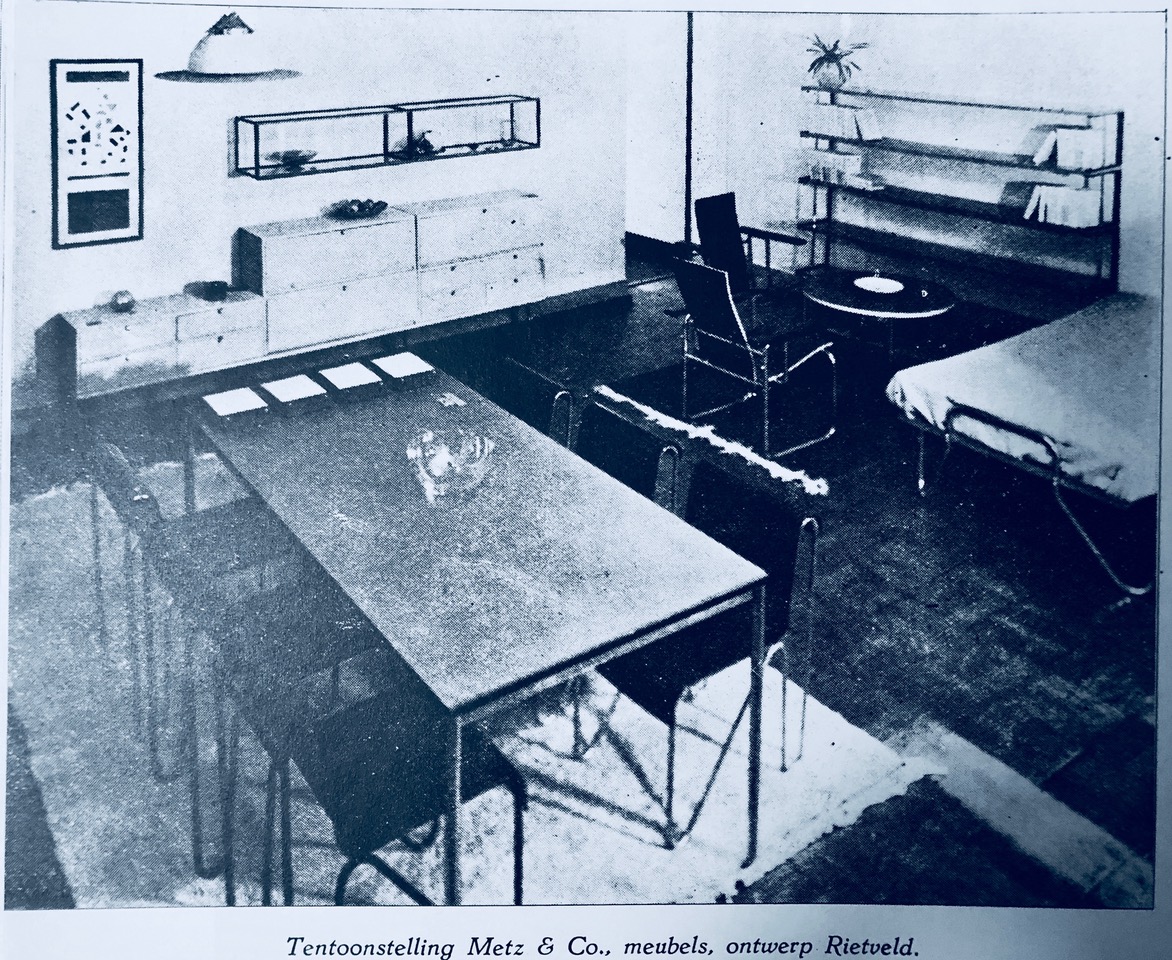
As far as we know, such an elaborately composed set of this important desig has never appeared on the current art market before nore has it been included in a public collection. Because the set is not only made up of planks but of so many different modules/units, it shows the character and design of the modular system very well. The modules can be used to create a visually attractive piece of furniture with different arrangements and variations.
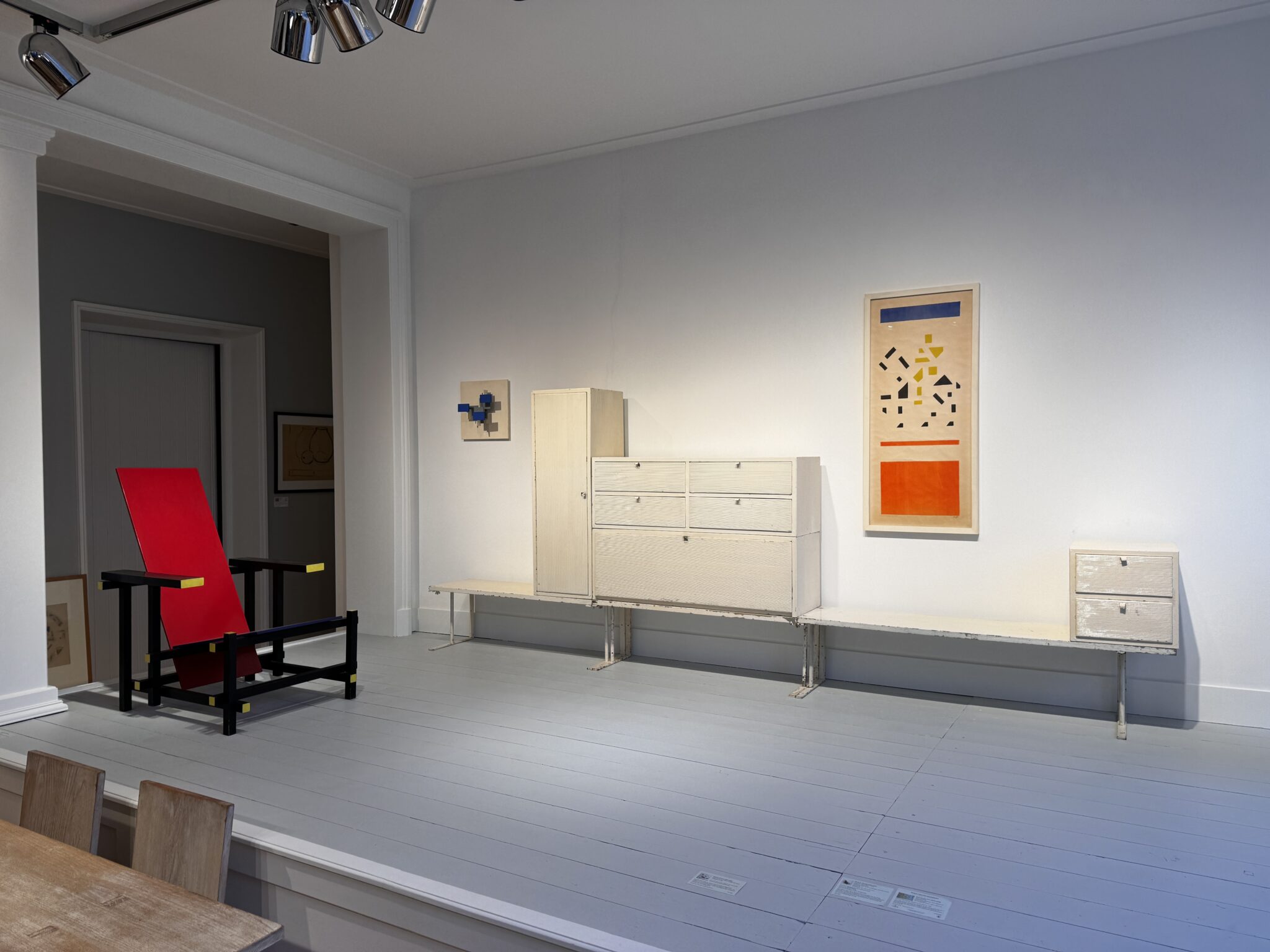

Provenance:
The first owner of this piece of furniture, Ada Hondius Crone, has commissioned progressive designers and architects to make renovations and interiors in several successive decades. With wall panels and furniture by the Dutch designer and sculptor Hildo Krop, tubular steel furniture by the well known producers Thonet and WH Gispen and lamps and modular furniture by Gerrit Rietveld, her interior in the villa ‘Vijverhof’ in Bloemendaal, The Netherlands was a reflection of the modern architecture and interior styles of the early twentieth century.
